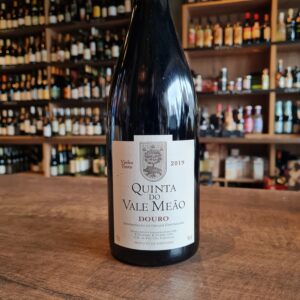-
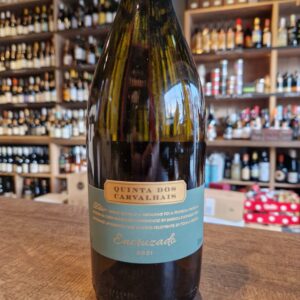 Sogrape Vinhos was founded in 1942 by Fernando van Zeller Guedes, with the ambition of making Portuguese wines known to the world and a long-term vision based on the quality of the wines to be marketed, the importance of the novelty of the brands, and the presentation of its wines. Today, led by the third generation of the founding family, Sogrape Vinhos is increasingly faithful to the goal it has had since it was founded: to be a family-owned company with an international vocation, focused on the production of quality wines, on innovation, and the development of global Portuguese brands. Sogrape Vinhos has about 830 hectares of vineyards in Portugal. Quinta dos Carvalhais is located in the municipality of Mangualde, near Nelas and Alcafache. The soil, the climate, the experience of those who have always produced wine make the Dão truly special. This 105-hectare estate, situated at an altitude of 465-500 metres, has 50 hectares under vine on predominantly granite soils. Warm days and cool nights at this altitude slow down the grape ripening process and result in wines with lovely depth yet vibrant fruit and a signature freshness. Precision viticulture is carried out on the estate with a multitude of different plots matched to specific grape varieties and harvested at different times. The fruit for the 2021 Encruzado was sourced from four different plots. Two cooler plots, one next to the lake on the estate and another often shaded by the oak trees, deliver a vibrant acidity the blend. Another plot with more sandy soils produces intensely aromatic grapes. All of the vineyards are farmed sustainably and harvesting is carried out by hand.
Sogrape Vinhos was founded in 1942 by Fernando van Zeller Guedes, with the ambition of making Portuguese wines known to the world and a long-term vision based on the quality of the wines to be marketed, the importance of the novelty of the brands, and the presentation of its wines. Today, led by the third generation of the founding family, Sogrape Vinhos is increasingly faithful to the goal it has had since it was founded: to be a family-owned company with an international vocation, focused on the production of quality wines, on innovation, and the development of global Portuguese brands. Sogrape Vinhos has about 830 hectares of vineyards in Portugal. Quinta dos Carvalhais is located in the municipality of Mangualde, near Nelas and Alcafache. The soil, the climate, the experience of those who have always produced wine make the Dão truly special. This 105-hectare estate, situated at an altitude of 465-500 metres, has 50 hectares under vine on predominantly granite soils. Warm days and cool nights at this altitude slow down the grape ripening process and result in wines with lovely depth yet vibrant fruit and a signature freshness. Precision viticulture is carried out on the estate with a multitude of different plots matched to specific grape varieties and harvested at different times. The fruit for the 2021 Encruzado was sourced from four different plots. Two cooler plots, one next to the lake on the estate and another often shaded by the oak trees, deliver a vibrant acidity the blend. Another plot with more sandy soils produces intensely aromatic grapes. All of the vineyards are farmed sustainably and harvesting is carried out by hand. -
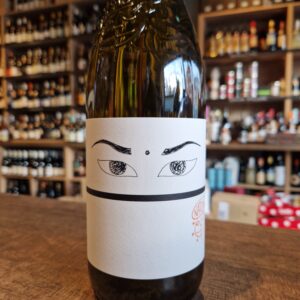 Nat Cool is naturally “cool and funky”. It represents an innovative concept initiated by Niepoort, in which various producers came together to create light, easy-to-drink wines. In the Vinho Verde region, we produced a wine typical of the region – a wine which references the “cloudy” wines of the past which were bottled with some residual sugar and fine lees, and therefore re-fermented in the bottle. Welcome to the Nat Cool world! This white wine was produced using a minimal intervention winemaking approach and is naturally turbid as it fermented in the bottle. It is intentionally not clarified and its aromas are reminiscent of the wines that used to be produced in the Vinho Verde region long ago. This is an intentionally uncomplicated wine: lightly shake the bottle before opening and enjoy with traditional Portuguese snacks!
Nat Cool is naturally “cool and funky”. It represents an innovative concept initiated by Niepoort, in which various producers came together to create light, easy-to-drink wines. In the Vinho Verde region, we produced a wine typical of the region – a wine which references the “cloudy” wines of the past which were bottled with some residual sugar and fine lees, and therefore re-fermented in the bottle. Welcome to the Nat Cool world! This white wine was produced using a minimal intervention winemaking approach and is naturally turbid as it fermented in the bottle. It is intentionally not clarified and its aromas are reminiscent of the wines that used to be produced in the Vinho Verde region long ago. This is an intentionally uncomplicated wine: lightly shake the bottle before opening and enjoy with traditional Portuguese snacks! -
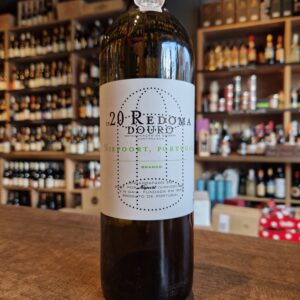 This oaky white will appeal to Graves or Burgundy lovers. The grapes used for the Redoma Branco originate from old vines growing on the right bank of the Douro River, at an altitude of between 400 and 600 metres. These vines predominantly grow in mica-schist soils, which, in combination with the complexity of the various grape varieties typical of the Douro region, create delicate wines full of freshness and minerality. Food suggestions-Oysters, oven-baked fish, poultry and other white meats. Vegetarian options: dishes based on root vegetables (turnips, sweet potato, beetroot), Caesar salad, cheese.
This oaky white will appeal to Graves or Burgundy lovers. The grapes used for the Redoma Branco originate from old vines growing on the right bank of the Douro River, at an altitude of between 400 and 600 metres. These vines predominantly grow in mica-schist soils, which, in combination with the complexity of the various grape varieties typical of the Douro region, create delicate wines full of freshness and minerality. Food suggestions-Oysters, oven-baked fish, poultry and other white meats. Vegetarian options: dishes based on root vegetables (turnips, sweet potato, beetroot), Caesar salad, cheese. -
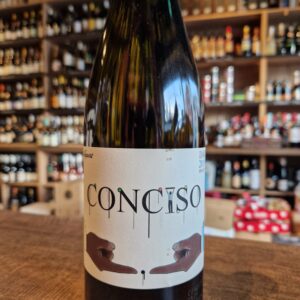 With the Conciso Branco, Niepoort have once again succeeded in creating a fresh and elegant white wine from the Dão region which shows off the potential of its old vines and granite terroir. The grapes come from the Quinta da Lomba, which has exceptionally old vineyards, with some vines being almost a century old with average altitude of 80 meters above sea level. These sites are planted predominantly with Bical, Encruzado and Malvasia, among other indigenous grape varieties of the region. Suggested dishes featuring cod and other oily fish. Pairs well with local sausages and is a great accompaniment for cheese from the “Serra da Estrela” or other buttery creamy cheeses.
With the Conciso Branco, Niepoort have once again succeeded in creating a fresh and elegant white wine from the Dão region which shows off the potential of its old vines and granite terroir. The grapes come from the Quinta da Lomba, which has exceptionally old vineyards, with some vines being almost a century old with average altitude of 80 meters above sea level. These sites are planted predominantly with Bical, Encruzado and Malvasia, among other indigenous grape varieties of the region. Suggested dishes featuring cod and other oily fish. Pairs well with local sausages and is a great accompaniment for cheese from the “Serra da Estrela” or other buttery creamy cheeses. -
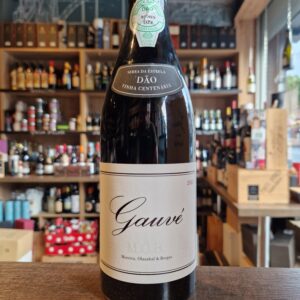 This project was born from the will of three winemakers, Jorge Moreira, Francisco Olazabal and Jorge Serôdio Borges, to make a wine together. The chosen region was the Dão, a region for which there is a common admiration that was born in the tasting of older wines, from the 60s and 70s that surprise for their elegance and freshness. The identity and complexity of these wines is indeed remarkable and serves as an inspiration for MOB wines.
This project was born from the will of three winemakers, Jorge Moreira, Francisco Olazabal and Jorge Serôdio Borges, to make a wine together. The chosen region was the Dão, a region for which there is a common admiration that was born in the tasting of older wines, from the 60s and 70s that surprise for their elegance and freshness. The identity and complexity of these wines is indeed remarkable and serves as an inspiration for MOB wines. -
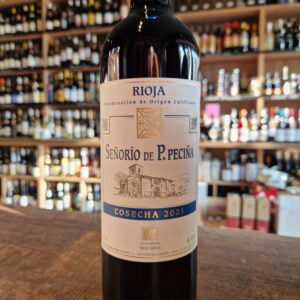 Bodegas Hermanos de Peciña is firmly planted in the old school camp. Although the estate was started only in 1992, its founder, Pedro Peciña had worked for over 20 years prior to that as the head agronomist for La Rioja Alta, learning all facets of production and especially the planting and managing of all the estate’s vineyards. The Peciña winery and vineyards are located in San Vicente, which while technically in the Rioja Alta sub-zone, is not in the vicinity of Haro where most of the other traditional Rioja houses have their cellars. Rather it is located on the northeast side of the Ebro river near the border of the Basque Alavesa zone. These vineyards - many 40 to 60 years old - are actually some of the finest in the appellation as they fall at the foothills of the Sierra Cantabria Mountains at an average of 500 meters, and offer hillside expositions as well as complex and diverse soils. Many of Peciña’s most prized vineyards are actually on north facing slopes which Pedro feels helps give the wines good freshness and delineation. Serve with aperitif, Charcuterie, Cured cheeses, Smoked foods
Bodegas Hermanos de Peciña is firmly planted in the old school camp. Although the estate was started only in 1992, its founder, Pedro Peciña had worked for over 20 years prior to that as the head agronomist for La Rioja Alta, learning all facets of production and especially the planting and managing of all the estate’s vineyards. The Peciña winery and vineyards are located in San Vicente, which while technically in the Rioja Alta sub-zone, is not in the vicinity of Haro where most of the other traditional Rioja houses have their cellars. Rather it is located on the northeast side of the Ebro river near the border of the Basque Alavesa zone. These vineyards - many 40 to 60 years old - are actually some of the finest in the appellation as they fall at the foothills of the Sierra Cantabria Mountains at an average of 500 meters, and offer hillside expositions as well as complex and diverse soils. Many of Peciña’s most prized vineyards are actually on north facing slopes which Pedro feels helps give the wines good freshness and delineation. Serve with aperitif, Charcuterie, Cured cheeses, Smoked foods -
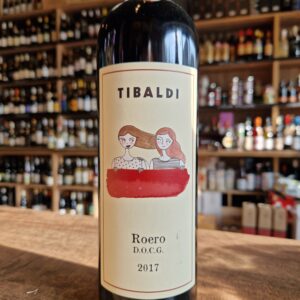 The Tibaldi family have been grape growers for several generations in the Pocapaglia area of Piemonte. In fact Nonno Tibaldi at 86 still works in the vineyard (starting with a glass from the barrel at 6am) with his son, Stefano. The Tibaldi’s have not traditionally made wine preferring to sell their crops to local producers. Stefano had 2 daughters, Monica and Daniela, and had no expectations that they would devote their lives to wine. But eldest daughter Monica studied Oenology and decided that she was going to start to make wine from the family’s wonderful fruit. Sister Daniela soon followed. And so Cantina Tibaldi was established. I simply know them as the Tibaldi Sisters. It is not unusual to see female winemakers in charge of important vineyards. Some of Australia’s finest wines are made by women and they will tell you that they are much better suited to the role as the olfactory senses are far more developed in females. What is unusual is to see the entire wine making process managed from start to finish by two women, both in their mid twenties. It can accompany any meat. Gives its best with important cheese, savory pasta and meat dishes.
The Tibaldi family have been grape growers for several generations in the Pocapaglia area of Piemonte. In fact Nonno Tibaldi at 86 still works in the vineyard (starting with a glass from the barrel at 6am) with his son, Stefano. The Tibaldi’s have not traditionally made wine preferring to sell their crops to local producers. Stefano had 2 daughters, Monica and Daniela, and had no expectations that they would devote their lives to wine. But eldest daughter Monica studied Oenology and decided that she was going to start to make wine from the family’s wonderful fruit. Sister Daniela soon followed. And so Cantina Tibaldi was established. I simply know them as the Tibaldi Sisters. It is not unusual to see female winemakers in charge of important vineyards. Some of Australia’s finest wines are made by women and they will tell you that they are much better suited to the role as the olfactory senses are far more developed in females. What is unusual is to see the entire wine making process managed from start to finish by two women, both in their mid twenties. It can accompany any meat. Gives its best with important cheese, savory pasta and meat dishes. -
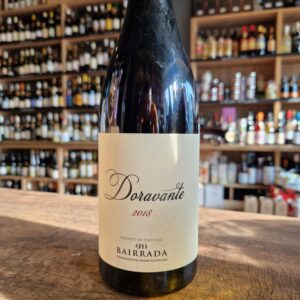
Nuno's philosophy is in keeping with this. In his own words, his wines are "a pursuit for balance with the utmost respect for nature".
Think of Doravante as an old-school claret, with lighter red fruit flavour and fresh pencil shaving mineral character. The blend is Baga and the better-known Touriga Nacional, fresh and elegant and long. So delicious and such an exciting region of Portugal.
Excellent served with strong dark meat and game dishes
-
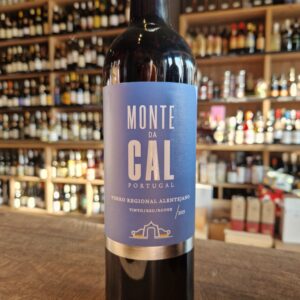 It is in the heart of the genuine Alentejo, with its unique aromas, flavors and textures, nature, silence and immensity, that the 80 hectares of vineyards at Herdade Monte da Cal, located in the municipality of Fronteira, in the parish of São Saturnino, extend over 80 hectares of vineyards. about 40 km from Portalegre. Surrounded by the tranquility of the northern Alentejo plain, it is part of the calm environment of nature characteristic of this part of the country, surrounded by an infinity of vineyards, which we can only see, far away. Here, the red varieties Trincadeira, Syrah, Aragonês, Alicante Bouschet, Alfrocheiro and Touriga Nacional are planted. The architecture and decoration of the estate reflect the Arab influences, so present in the Alentejo culture. The estate’s modern winery is a fundamental pillar to reinforce the visibility of the wines of this house, and a wine tourism project is already planned for this property. Suggested pairing with dishes from the Mediterranean, Chinese, Indian and African cuisine.
It is in the heart of the genuine Alentejo, with its unique aromas, flavors and textures, nature, silence and immensity, that the 80 hectares of vineyards at Herdade Monte da Cal, located in the municipality of Fronteira, in the parish of São Saturnino, extend over 80 hectares of vineyards. about 40 km from Portalegre. Surrounded by the tranquility of the northern Alentejo plain, it is part of the calm environment of nature characteristic of this part of the country, surrounded by an infinity of vineyards, which we can only see, far away. Here, the red varieties Trincadeira, Syrah, Aragonês, Alicante Bouschet, Alfrocheiro and Touriga Nacional are planted. The architecture and decoration of the estate reflect the Arab influences, so present in the Alentejo culture. The estate’s modern winery is a fundamental pillar to reinforce the visibility of the wines of this house, and a wine tourism project is already planned for this property. Suggested pairing with dishes from the Mediterranean, Chinese, Indian and African cuisine. -
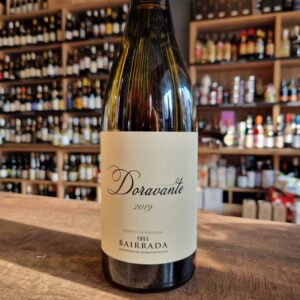
Excellent alternative for Burgundy 1er cru's or Villages.
This wine was born from Arinto vines around 30 years old and very old vines from Bical and Cercial. It is a different approach to these grapes and to the expression of the clay-limestone soils and the Atlantic climate of the region. The 2018 harvest turns the page to a more complex and creamy profile but with the lightness and freshness of always.
The producer Nuno Mira do Ó is passionate about authentic wines that are able to translate the “terroir” where they come from, made with indigenous grape varieties, with minimal intervention and respect for nature, with the potential to age and especially that provide pleasure to those who drink them
Excellent to accompany soft cheeses, cod, octopus and white meats.
-
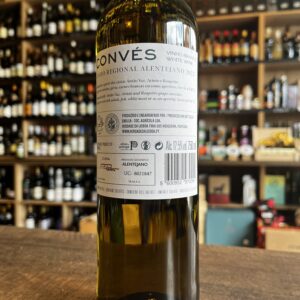
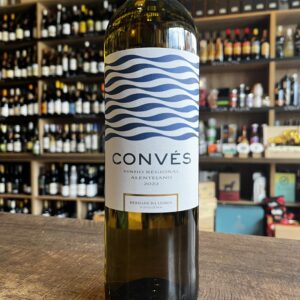 Since 2011 Herdad da Lisboa(name of the Qunta), has been the place of the Cardoso Family in Vidigueira, in the Baixo Alentejo sub-region. A place where the modernity of the winery intersects with the tradition of the Alentejo cellars and where the diversity of viticulture is added to the permanent evolution of oenology. The Serra do Mendro, located to the north of Vidigueira, creates a natural barrier that favors the retention of fresh winds from the Atlantic Ocean, causing greater rainfall and large thermal amplitudes. Cold mornings and nights and hot days promote a balanced maturation of the grapes, preserving their freshness and natural acidity. The gentle slopes and elevations of the landscape, as well as the clay-schist soils bring minerality, freshness and diversity to the wines of Herdade da Lisboa. The approximately 100 hectares of vineyards at Herdade da Lisboa express the producer's deep respect for nature, integrating several sustainable practices, which allow optimizing the consumption of essential resources, such as water and energy. Natural grass, mechanical weed cutting to avoid the use of herbicides, close surveillance of pests, use of solar panels, its own weather station and probes for measuring soil humidity and temperature are some of the techniques and equipment used. It goes very well with fish and seafood dishes, salads or Asian dishes.
Since 2011 Herdad da Lisboa(name of the Qunta), has been the place of the Cardoso Family in Vidigueira, in the Baixo Alentejo sub-region. A place where the modernity of the winery intersects with the tradition of the Alentejo cellars and where the diversity of viticulture is added to the permanent evolution of oenology. The Serra do Mendro, located to the north of Vidigueira, creates a natural barrier that favors the retention of fresh winds from the Atlantic Ocean, causing greater rainfall and large thermal amplitudes. Cold mornings and nights and hot days promote a balanced maturation of the grapes, preserving their freshness and natural acidity. The gentle slopes and elevations of the landscape, as well as the clay-schist soils bring minerality, freshness and diversity to the wines of Herdade da Lisboa. The approximately 100 hectares of vineyards at Herdade da Lisboa express the producer's deep respect for nature, integrating several sustainable practices, which allow optimizing the consumption of essential resources, such as water and energy. Natural grass, mechanical weed cutting to avoid the use of herbicides, close surveillance of pests, use of solar panels, its own weather station and probes for measuring soil humidity and temperature are some of the techniques and equipment used. It goes very well with fish and seafood dishes, salads or Asian dishes. -
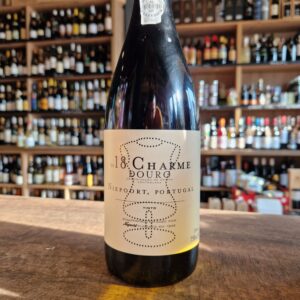 Another excellent wine from Niepoort. Charme is all about elegance and balance, achieved by taking special attention to the smallest details during the entire wine-making process. Made in traditional stone lagares with 100% grape stems, Charme’s elegance is achieved using grapes from very old vineyards in Vale de Mendiz, on the banks of the Pinhão river. Pair it with mushrooms and game dishes, such as partridge or pheasant
Another excellent wine from Niepoort. Charme is all about elegance and balance, achieved by taking special attention to the smallest details during the entire wine-making process. Made in traditional stone lagares with 100% grape stems, Charme’s elegance is achieved using grapes from very old vineyards in Vale de Mendiz, on the banks of the Pinhão river. Pair it with mushrooms and game dishes, such as partridge or pheasant -
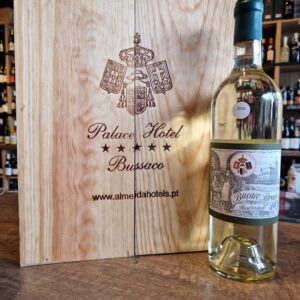 Alexandre de Almeida, founder of the oldest hotel chain in Portugal with the same name, began producing Buçaco Wines in 1917 when he realized what the Hotel Winery concept meant after many visits to European hotels, including those on the French “Côte D’Azure”. This gave him the idea to open his own winery at the Buçaco Palace, starting to produce varieties that would come to be known as the glorious “Buçaco wines”. In the early 20th century, one of the most interesting pages on Portuguese wine was created, the wine that was to become a much-envied icon, but which was always intentionally kept out of the limelight. Its creator, Alexandre de Almeida, adopted the concept of linking luxury hotels to a winery with their own wine. If we look back, ever since the first harvests we realized the importance of this icon that was served to kings, queens and heads of state, as proven by menus, proudly kept at the Hotel Palace Buçaco. Buçaco wines were just that: objects of culture limited to very restricted circles, the elite. Their fantastic and noble labels still bear the symbol of their nobility to this day and age. The Buçaco wines were and still are always produced in the same way using the same methods as in the past. The fact that the grapes come from the Dão and Bairrada regions guarantees a wonderful wine that nobly develops in the bottle. If you happen to visit this unique 5* Hotel, just North of Coimbra(between Lisbon and Porto) you will be in for an experience. Situated in the Bussaco National Forest, this 5-star hotel occupies the hunting palace of the last Portuguese kings. Palace Hotel do Bussaco is an excellent example of Manueline-Gothic architecture. Its richly decorated corridors feature antique furnishings, large paintings and traditional Portuguese glazed tiles. Its elegant restaurant offers a range of exclusive Bussaco wines(only). Classic French cuisine and traditional Portuguese dishes are served at Palace Hotel do Bussaco’s restaurant. It is decorated with paintings by João Vaz, Moorish ceilings and exotic hardwood floors. Guests can try a glass of rare Port vintage at the bar. Fantastic experience with amazing wines
Alexandre de Almeida, founder of the oldest hotel chain in Portugal with the same name, began producing Buçaco Wines in 1917 when he realized what the Hotel Winery concept meant after many visits to European hotels, including those on the French “Côte D’Azure”. This gave him the idea to open his own winery at the Buçaco Palace, starting to produce varieties that would come to be known as the glorious “Buçaco wines”. In the early 20th century, one of the most interesting pages on Portuguese wine was created, the wine that was to become a much-envied icon, but which was always intentionally kept out of the limelight. Its creator, Alexandre de Almeida, adopted the concept of linking luxury hotels to a winery with their own wine. If we look back, ever since the first harvests we realized the importance of this icon that was served to kings, queens and heads of state, as proven by menus, proudly kept at the Hotel Palace Buçaco. Buçaco wines were just that: objects of culture limited to very restricted circles, the elite. Their fantastic and noble labels still bear the symbol of their nobility to this day and age. The Buçaco wines were and still are always produced in the same way using the same methods as in the past. The fact that the grapes come from the Dão and Bairrada regions guarantees a wonderful wine that nobly develops in the bottle. If you happen to visit this unique 5* Hotel, just North of Coimbra(between Lisbon and Porto) you will be in for an experience. Situated in the Bussaco National Forest, this 5-star hotel occupies the hunting palace of the last Portuguese kings. Palace Hotel do Bussaco is an excellent example of Manueline-Gothic architecture. Its richly decorated corridors feature antique furnishings, large paintings and traditional Portuguese glazed tiles. Its elegant restaurant offers a range of exclusive Bussaco wines(only). Classic French cuisine and traditional Portuguese dishes are served at Palace Hotel do Bussaco’s restaurant. It is decorated with paintings by João Vaz, Moorish ceilings and exotic hardwood floors. Guests can try a glass of rare Port vintage at the bar. Fantastic experience with amazing wines -
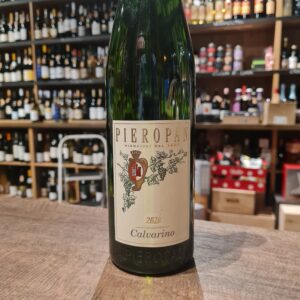 The history of this brand dates back to 1880, when this business was established in the Soave village in the reputed zone of Palazzo Pullici in Italy. Leonildo Pieropan, a physician from Soave, was well-aware of the potential of the soils in this region, because of his previous work experience in the family vineyards. He, along with his sons, Fausto and Gustavo, started working in the cellars in the 1950s and 60s to churn out impeccable quality, Italian wines that spoke a lot about the quality of their terroirs. Today, this business is run by the fifth generation of the Pieropan family, with the same dedication and winemaking philosophy. The Pieropan family believes in traditional winemaking principles. These are reflected in the way they maintain their vineyards. The local territory of these vineyards is given utmost importance and minimalistic intervention technique is followed in addition to organic viticultural practices. The three vineyards from where grapes are sourced for Pieropan wines are Calvarino, La Rocca and Garzon. Calvarino vineyard is the oldest of the three as it has been with the family since 1901. It is located right in the heart of the Soave area and is blessed with amazingly rich and fertile volcanic soils. It makes an excellent aperitif and partners a wide range of dishes, especially vegetable quiches, delicately-flavoured fish, shellfish and cheese soufflés
The history of this brand dates back to 1880, when this business was established in the Soave village in the reputed zone of Palazzo Pullici in Italy. Leonildo Pieropan, a physician from Soave, was well-aware of the potential of the soils in this region, because of his previous work experience in the family vineyards. He, along with his sons, Fausto and Gustavo, started working in the cellars in the 1950s and 60s to churn out impeccable quality, Italian wines that spoke a lot about the quality of their terroirs. Today, this business is run by the fifth generation of the Pieropan family, with the same dedication and winemaking philosophy. The Pieropan family believes in traditional winemaking principles. These are reflected in the way they maintain their vineyards. The local territory of these vineyards is given utmost importance and minimalistic intervention technique is followed in addition to organic viticultural practices. The three vineyards from where grapes are sourced for Pieropan wines are Calvarino, La Rocca and Garzon. Calvarino vineyard is the oldest of the three as it has been with the family since 1901. It is located right in the heart of the Soave area and is blessed with amazingly rich and fertile volcanic soils. It makes an excellent aperitif and partners a wide range of dishes, especially vegetable quiches, delicately-flavoured fish, shellfish and cheese soufflés -
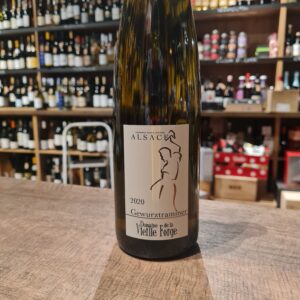 With his diploma in oenology, Denis Wurtz has been reviving since 1998 the estate of his grandparents in Beblenheim, whose name evokes the profession of one of his ancestors. Installed in a 16th century half-timbered house in the heart of the gorgeous Alsatian vineyards. The Vieille Forge Estate runs 10 acres where 1/3 is dedicated to the production of Grands Cru wines. To the south of Riquewihr, the vineyard is situated in a natural circus oriented gently towards the south-east. Its clay-marly soils are favorable to gewurztraminer. This enchants with the intensity and finesse of its aromatic palette. A sensational wine, it will assert itself with spicy dishes from other continents, cheeses and even desserts.
With his diploma in oenology, Denis Wurtz has been reviving since 1998 the estate of his grandparents in Beblenheim, whose name evokes the profession of one of his ancestors. Installed in a 16th century half-timbered house in the heart of the gorgeous Alsatian vineyards. The Vieille Forge Estate runs 10 acres where 1/3 is dedicated to the production of Grands Cru wines. To the south of Riquewihr, the vineyard is situated in a natural circus oriented gently towards the south-east. Its clay-marly soils are favorable to gewurztraminer. This enchants with the intensity and finesse of its aromatic palette. A sensational wine, it will assert itself with spicy dishes from other continents, cheeses and even desserts. -
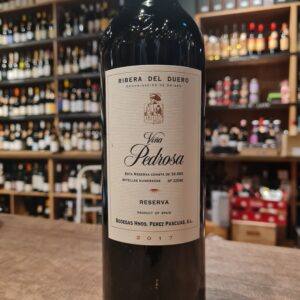 Bodegas Hnos. Perez Pascuas is a winery founded in 1980 and located in Pedrosa de Duero. In its vineyards, Tinta del País or Tempranillo predominate, and they also have a little Cabernet Sauvignon. They produce around 500,000 bottles. They also have a large collection of 3,000 barrels. The barrels are renewed every 3 years to maintain the contribution of compounds from the wood, and the toasted elements that characterise the style of the winery. Viña Pedrosa Reserva is an iconic wine from Pedrosa de Duero. A complex, powerful and highly expressive wine
Bodegas Hnos. Perez Pascuas is a winery founded in 1980 and located in Pedrosa de Duero. In its vineyards, Tinta del País or Tempranillo predominate, and they also have a little Cabernet Sauvignon. They produce around 500,000 bottles. They also have a large collection of 3,000 barrels. The barrels are renewed every 3 years to maintain the contribution of compounds from the wood, and the toasted elements that characterise the style of the winery. Viña Pedrosa Reserva is an iconic wine from Pedrosa de Duero. A complex, powerful and highly expressive wine -
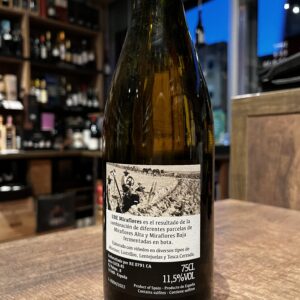
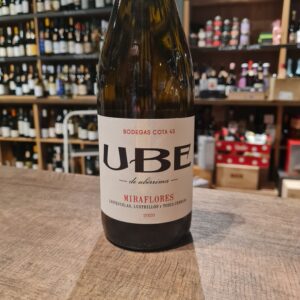 UBE Miraflores is a beautiful introduction to the terroirs of Sanlúcar de Barrameda. This winegrowing region is renowned for its chalky albariza soils and coastal setting, which impart brightness and salinity onto wines produced here. Made in a ‘sherry-like’ style, this wine ages under flor but is not fortified, with a focus on fruit character. The resulting wine is fresh and easy to drink.
UBE Miraflores is a beautiful introduction to the terroirs of Sanlúcar de Barrameda. This winegrowing region is renowned for its chalky albariza soils and coastal setting, which impart brightness and salinity onto wines produced here. Made in a ‘sherry-like’ style, this wine ages under flor but is not fortified, with a focus on fruit character. The resulting wine is fresh and easy to drink. -
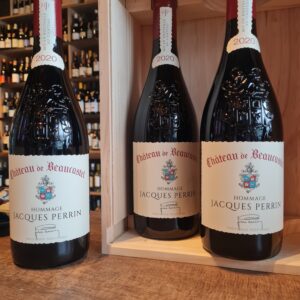 The Perrin family of Châteauneuf-du-Pape are one of the Rhône Valley’s greatest vineyard owners. With over 200 hectares of top level, prime vineyards at their fingertips, they have the terroir and skill required to produce some of the region’s finest wines. The estate traces its history back to a plot of Coudoulet vines bought by Pierre de Beaucastel in 1549. The estate was transferred into the Perrin family in 1909 through marriage, where it remains firmly to this day. Despite being one of the old guards of the region, they are also one of the most progressive estates. They were one of the first converts to organic and biodynamic faming in Châteauneuf-du-Pape, which they adopted in 1950 and 1974 respectively. A legendary Châteauneuf-du-Pape wine, Hommage à Jacques Perrin by Château de Beaucastel is one of the world's greatest wines. It brilliantly embodies the motto of the Perrin family: "A Grand Vin embodies emotion and civilisation, a legend that transcends time." The first vintage of this prestigious wine was produced in 1989. Produced in very limited quantities, the Hommage à Jacques Perrin wine comes from a unique terroir composed of rolled pebbles upon clay-limestone and silt soils in an exceptional vineyard located in the northern part of the Châteauneuf-du-Pape appellation, in the Rhône Valley. Vintage 2020 was relatively mild, the winter was punctuated by an episode of frost which had little impact on the vineyards, even the earliest plots. While the mildness of spring favoured vegetative development, a constant wind kept the soil cool. The hot, sunny summer was marked by both coolness and temperature variations between day and night, ideal conditions for ensuring a high-quality and even ripening of the grapes. Harvested at perfect maturity, the juicy and balanced grapes gave rise to a fine vintage.
The Perrin family of Châteauneuf-du-Pape are one of the Rhône Valley’s greatest vineyard owners. With over 200 hectares of top level, prime vineyards at their fingertips, they have the terroir and skill required to produce some of the region’s finest wines. The estate traces its history back to a plot of Coudoulet vines bought by Pierre de Beaucastel in 1549. The estate was transferred into the Perrin family in 1909 through marriage, where it remains firmly to this day. Despite being one of the old guards of the region, they are also one of the most progressive estates. They were one of the first converts to organic and biodynamic faming in Châteauneuf-du-Pape, which they adopted in 1950 and 1974 respectively. A legendary Châteauneuf-du-Pape wine, Hommage à Jacques Perrin by Château de Beaucastel is one of the world's greatest wines. It brilliantly embodies the motto of the Perrin family: "A Grand Vin embodies emotion and civilisation, a legend that transcends time." The first vintage of this prestigious wine was produced in 1989. Produced in very limited quantities, the Hommage à Jacques Perrin wine comes from a unique terroir composed of rolled pebbles upon clay-limestone and silt soils in an exceptional vineyard located in the northern part of the Châteauneuf-du-Pape appellation, in the Rhône Valley. Vintage 2020 was relatively mild, the winter was punctuated by an episode of frost which had little impact on the vineyards, even the earliest plots. While the mildness of spring favoured vegetative development, a constant wind kept the soil cool. The hot, sunny summer was marked by both coolness and temperature variations between day and night, ideal conditions for ensuring a high-quality and even ripening of the grapes. Harvested at perfect maturity, the juicy and balanced grapes gave rise to a fine vintage. -
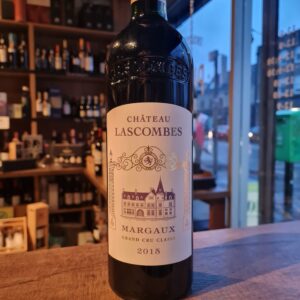 The iconic, ivy-covered Château Lascombes is one of the most recognizable structures in all of Margaux. One would never expect this picturesque and secluded estate to have one of the largest vineyards in the Médoc. The vineyard is an astounding 120 hectares primarily located in Margaux; with 10 hectares in the Haut-Médoc appellation. With a staff of 36, one can imagine the harvest period on such a vast estate would be difficult to manage. Because of their access to state-of-the-art technology and some of the most desirable plots in Margaux, the viticultural team of Château Lascombes produces wines that continue to impress and receive critical acclaim. Château Lascombes earned its namesake after its owner, Antoine Chevalier de Lascombes in 1625. The estate was inherited from the Durfort de Duras family who also owned Château Durfort – later known as the famed Second Growth property, Château Durfort-Vivens. Château Lascombes was classified as a Second Growth estate in 1855, but its history really began when it was purchased almost a hundred years later. Alexis Lichine and a group of investors – including the wealthy American, David Rockefeller – purchased the estate in 1952. There is a diverse array of soil types at Château Lascombes. Gravelly outcroppings are planted with Cabernet Sauvignon and Petit Verdot. The property also has limestone terroir, which is highly unique to the Margaux region. It is the areas with clay and limestone where the primary varietal at Château Lascombes, Merlot, really shines. Château Lascombes has 50% of its vineyard planted with Merlot – an unusual choice for an estate in Margaux. The vines are on average 35 years old, and only 50-hectares of the sprawling vineyard are considered able to produce the wines of top Second Growth quality. The estate is presently managed by Dominique Befve, who brings his expertise from ten years as technical director at Château Lafite Rothschild and Duhart Milon. Upon his arrival, Dominique oversaw major technical innovations to the cellar. The cellar astonishes visitors with its signature blue lights and technologically advanced Oxoline racks. The racks rotate the barrels and keep the lees of the wine in suspension, reducing oxidation and making the wine round and more immediately accessible. Open at least 1 hour before tasting, this Margaux finesse will be preferred at the time of entry (meat) or on your cheese board (soft and hard pasta).
The iconic, ivy-covered Château Lascombes is one of the most recognizable structures in all of Margaux. One would never expect this picturesque and secluded estate to have one of the largest vineyards in the Médoc. The vineyard is an astounding 120 hectares primarily located in Margaux; with 10 hectares in the Haut-Médoc appellation. With a staff of 36, one can imagine the harvest period on such a vast estate would be difficult to manage. Because of their access to state-of-the-art technology and some of the most desirable plots in Margaux, the viticultural team of Château Lascombes produces wines that continue to impress and receive critical acclaim. Château Lascombes earned its namesake after its owner, Antoine Chevalier de Lascombes in 1625. The estate was inherited from the Durfort de Duras family who also owned Château Durfort – later known as the famed Second Growth property, Château Durfort-Vivens. Château Lascombes was classified as a Second Growth estate in 1855, but its history really began when it was purchased almost a hundred years later. Alexis Lichine and a group of investors – including the wealthy American, David Rockefeller – purchased the estate in 1952. There is a diverse array of soil types at Château Lascombes. Gravelly outcroppings are planted with Cabernet Sauvignon and Petit Verdot. The property also has limestone terroir, which is highly unique to the Margaux region. It is the areas with clay and limestone where the primary varietal at Château Lascombes, Merlot, really shines. Château Lascombes has 50% of its vineyard planted with Merlot – an unusual choice for an estate in Margaux. The vines are on average 35 years old, and only 50-hectares of the sprawling vineyard are considered able to produce the wines of top Second Growth quality. The estate is presently managed by Dominique Befve, who brings his expertise from ten years as technical director at Château Lafite Rothschild and Duhart Milon. Upon his arrival, Dominique oversaw major technical innovations to the cellar. The cellar astonishes visitors with its signature blue lights and technologically advanced Oxoline racks. The racks rotate the barrels and keep the lees of the wine in suspension, reducing oxidation and making the wine round and more immediately accessible. Open at least 1 hour before tasting, this Margaux finesse will be preferred at the time of entry (meat) or on your cheese board (soft and hard pasta). -
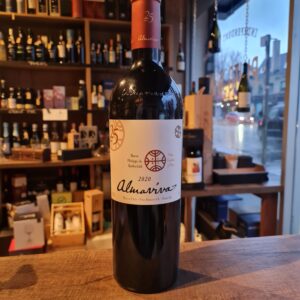 To celebrate the estate's 25th anniversary, the 2020 vintage by Almaviva is adorned with a special "25 años" label. Viña Almaviva was founded in 1997 following the collaboration between Baroness Philippine de Rothschild and Don Alfonso Larrain, President of Viña Concha y Toro. The Viña Almaviva project gives rise to fine Chilean wines that benefit from a rich French winemaking know-how and the unique expression of this Central Valley terroir. The name Almaviva, though it has an Hispanic sonority, belongs to classical French literature: Count Almaviva is the hero of The Marriage of Figaro, the famous play by Beaumarchais (1732-1799), later turned into an opera by the genius of Mozart. The label, meanwhile, pays homage to Chile’s ancestral history, with three reproductions of a stylized design, which symbolizes the vision of the earth and the cosmos in the Mapuche civilization. The design appears on the kultrun, a ritual drum used by the Mapuche. The label bears the name Almaviva in Beaumarchais’ own handwriting. Two great traditions thus join hands to offer the whole world a promise of pleasure and excellence. Located in the heart of the beautiful Maipo Valley, the Almaviva vineyard covers 50 hectares. The emblematic Bordeaux grape varieties thrive in this exceptional terroir. Almaviva has now become an essential reference for fine Chilean wines throughout the world. A particularly dry year, 2020 began with a cool, dry winter, resulting in a late budburst, particularly during the first two weeks of October. The spring and summer were marked by high temperatures but also by drought. These conditions favoured a rapid maturation of the vineyard and an early harvest, which ended three to four weeks earlier than in recent years. Despite this extreme climate and thanks to the rigour of the teams, the 2020 vintage reveals a fruity structure, a fresh expression and a rare tension.
To celebrate the estate's 25th anniversary, the 2020 vintage by Almaviva is adorned with a special "25 años" label. Viña Almaviva was founded in 1997 following the collaboration between Baroness Philippine de Rothschild and Don Alfonso Larrain, President of Viña Concha y Toro. The Viña Almaviva project gives rise to fine Chilean wines that benefit from a rich French winemaking know-how and the unique expression of this Central Valley terroir. The name Almaviva, though it has an Hispanic sonority, belongs to classical French literature: Count Almaviva is the hero of The Marriage of Figaro, the famous play by Beaumarchais (1732-1799), later turned into an opera by the genius of Mozart. The label, meanwhile, pays homage to Chile’s ancestral history, with three reproductions of a stylized design, which symbolizes the vision of the earth and the cosmos in the Mapuche civilization. The design appears on the kultrun, a ritual drum used by the Mapuche. The label bears the name Almaviva in Beaumarchais’ own handwriting. Two great traditions thus join hands to offer the whole world a promise of pleasure and excellence. Located in the heart of the beautiful Maipo Valley, the Almaviva vineyard covers 50 hectares. The emblematic Bordeaux grape varieties thrive in this exceptional terroir. Almaviva has now become an essential reference for fine Chilean wines throughout the world. A particularly dry year, 2020 began with a cool, dry winter, resulting in a late budburst, particularly during the first two weeks of October. The spring and summer were marked by high temperatures but also by drought. These conditions favoured a rapid maturation of the vineyard and an early harvest, which ended three to four weeks earlier than in recent years. Despite this extreme climate and thanks to the rigour of the teams, the 2020 vintage reveals a fruity structure, a fresh expression and a rare tension. -
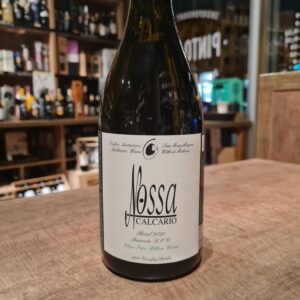 This mineral-driven white wine from Filipa Pato is akin to top quality white Burgundy. Using the Bical grape, the wine is aged in old French oak barrels and displays a great balance between creamy richness and lean minerality. Following in the footsteps in the winemaking traditions of her well-known father, Luis, Filipa Pato has now, in her own right, garnered a reputation for producing a superb range of wines in the heart of Bairrada, in Ois do Bairro. Focussing on Bairrada’s local native grape varieties, Filipa’s top-level white. It should be served not too cold, decanted into elegant glasses. It goes well with cheeses, fish dishes and salads.
This mineral-driven white wine from Filipa Pato is akin to top quality white Burgundy. Using the Bical grape, the wine is aged in old French oak barrels and displays a great balance between creamy richness and lean minerality. Following in the footsteps in the winemaking traditions of her well-known father, Luis, Filipa Pato has now, in her own right, garnered a reputation for producing a superb range of wines in the heart of Bairrada, in Ois do Bairro. Focussing on Bairrada’s local native grape varieties, Filipa’s top-level white. It should be served not too cold, decanted into elegant glasses. It goes well with cheeses, fish dishes and salads. -
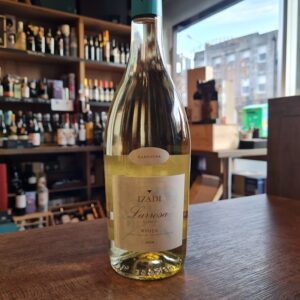 In 1987, Gonzalo Antón, in conjunction with a group of friends and business associates from Vitoria, decided to set up an innovative project in the heart of the Rioja Alavesa. Thus Bodegas Izadi came into being, situated in the triangle formed by the towns of Villabuena, Samaniego and Ábalos, the triangular motif on its labels, and with the clear objective of giving maximum expression to the fruit of that particular location, that natural environment so well-loved (Izadi means 'nature' in Basque), integrating innovation and tradition. This particular vineyard is situated 800m above sea level where the vines are planted in a mix of calcareous and clay soils. Izadi is also one of the few wineries truly involved with gastronomy, aware that even though there's a wine for every moment, on 90% of occasions it's served and enjoyed accompanied by food; and so that's why Izadi offers a wide variety of wines, all of which are very versatile. It's slogan leaves us in no doubt: "Wine and gastronomy are our passion". Since 2001, Lalo Antón has been heading up and managing the winery, and responsible for having driven forward business beyond local boundaries, as well as having started a programme of expansion with the successful Artevino group. Great with chicken, salads and oily fishes
In 1987, Gonzalo Antón, in conjunction with a group of friends and business associates from Vitoria, decided to set up an innovative project in the heart of the Rioja Alavesa. Thus Bodegas Izadi came into being, situated in the triangle formed by the towns of Villabuena, Samaniego and Ábalos, the triangular motif on its labels, and with the clear objective of giving maximum expression to the fruit of that particular location, that natural environment so well-loved (Izadi means 'nature' in Basque), integrating innovation and tradition. This particular vineyard is situated 800m above sea level where the vines are planted in a mix of calcareous and clay soils. Izadi is also one of the few wineries truly involved with gastronomy, aware that even though there's a wine for every moment, on 90% of occasions it's served and enjoyed accompanied by food; and so that's why Izadi offers a wide variety of wines, all of which are very versatile. It's slogan leaves us in no doubt: "Wine and gastronomy are our passion". Since 2001, Lalo Antón has been heading up and managing the winery, and responsible for having driven forward business beyond local boundaries, as well as having started a programme of expansion with the successful Artevino group. Great with chicken, salads and oily fishes -
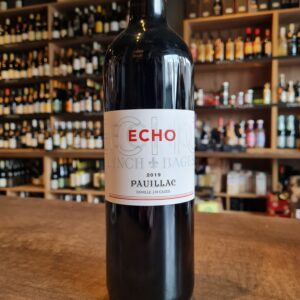 Thomas Lynch was a descendant of the Tribes of Galway. His father John emigrated in 1691 from Galway, Ireland to Bordeaux, inherited an estate in the village of Bages through his wife, Elizabeth, in 1749. This year represents the foundation of Château Lynch-Bages, which Thomas passed on to his son, Jean-Baptiste, upon his marriage in 1779. Jean-Baptiste soon handed over supervision to his brother Michel who maintained responsibility for the Bages estate until 1824, when the family sold it to a Swiss wine merchant, Sebastien Jurine, who had recently moved to Bordeaux. Château Lynch-Bages remained in the hands of the Jurine family, followed by the Cayrou family, for over a hundred years. In 1934, Jean-Charles Cazes rented the property from its then owner, Felix de Vial, subsequently purchasing it in 1938. After Jean-Charles Cazes’ death, aged 95, in 1972, the estate has been largely managed by his grandson, Jean-Michel Cazes.[2] In the late 1980s, the AXA Millésimes group began to develop a portfolio of wine property holdings, and approached Jean-Michel Cazes for help (Claude Bébéar, the AXA President, was a long-time Cazes family friend). They established Châteaux & Associés, which Cazes ran until he reached 65, and which by the end of the twentieth century owned many vineyards across Europe. Ownership of Château Lynch-Bages, however, remains with the Cazes family. In 2017, the Cazes family has acquired Château Haut-Batailley, the 1855 Grand Cru Classé estate in Pauillac. In the interest of sustainable development, agriculture is in every way reasoned: fertilization methods defined precisely and adapted to soil, optimized phytosanitary control, use of sexual confusion against worms of the bunch, controlled grassing of plots for control the vigor of the vine, prolonged rest of the soil by flowering fallow land … The use of neutral products for the environment is everywhere privileged.
Thomas Lynch was a descendant of the Tribes of Galway. His father John emigrated in 1691 from Galway, Ireland to Bordeaux, inherited an estate in the village of Bages through his wife, Elizabeth, in 1749. This year represents the foundation of Château Lynch-Bages, which Thomas passed on to his son, Jean-Baptiste, upon his marriage in 1779. Jean-Baptiste soon handed over supervision to his brother Michel who maintained responsibility for the Bages estate until 1824, when the family sold it to a Swiss wine merchant, Sebastien Jurine, who had recently moved to Bordeaux. Château Lynch-Bages remained in the hands of the Jurine family, followed by the Cayrou family, for over a hundred years. In 1934, Jean-Charles Cazes rented the property from its then owner, Felix de Vial, subsequently purchasing it in 1938. After Jean-Charles Cazes’ death, aged 95, in 1972, the estate has been largely managed by his grandson, Jean-Michel Cazes.[2] In the late 1980s, the AXA Millésimes group began to develop a portfolio of wine property holdings, and approached Jean-Michel Cazes for help (Claude Bébéar, the AXA President, was a long-time Cazes family friend). They established Châteaux & Associés, which Cazes ran until he reached 65, and which by the end of the twentieth century owned many vineyards across Europe. Ownership of Château Lynch-Bages, however, remains with the Cazes family. In 2017, the Cazes family has acquired Château Haut-Batailley, the 1855 Grand Cru Classé estate in Pauillac. In the interest of sustainable development, agriculture is in every way reasoned: fertilization methods defined precisely and adapted to soil, optimized phytosanitary control, use of sexual confusion against worms of the bunch, controlled grassing of plots for control the vigor of the vine, prolonged rest of the soil by flowering fallow land … The use of neutral products for the environment is everywhere privileged.


